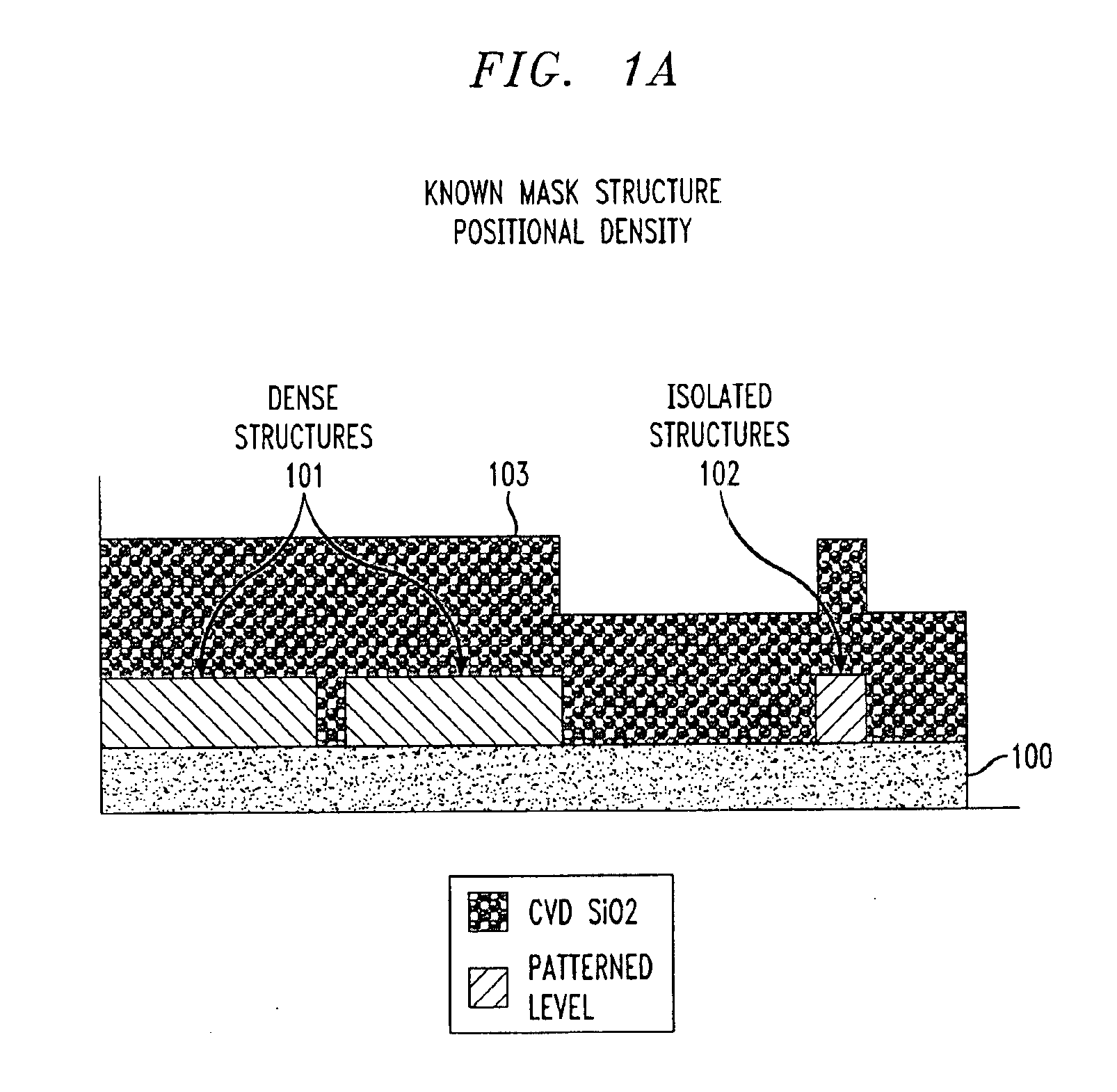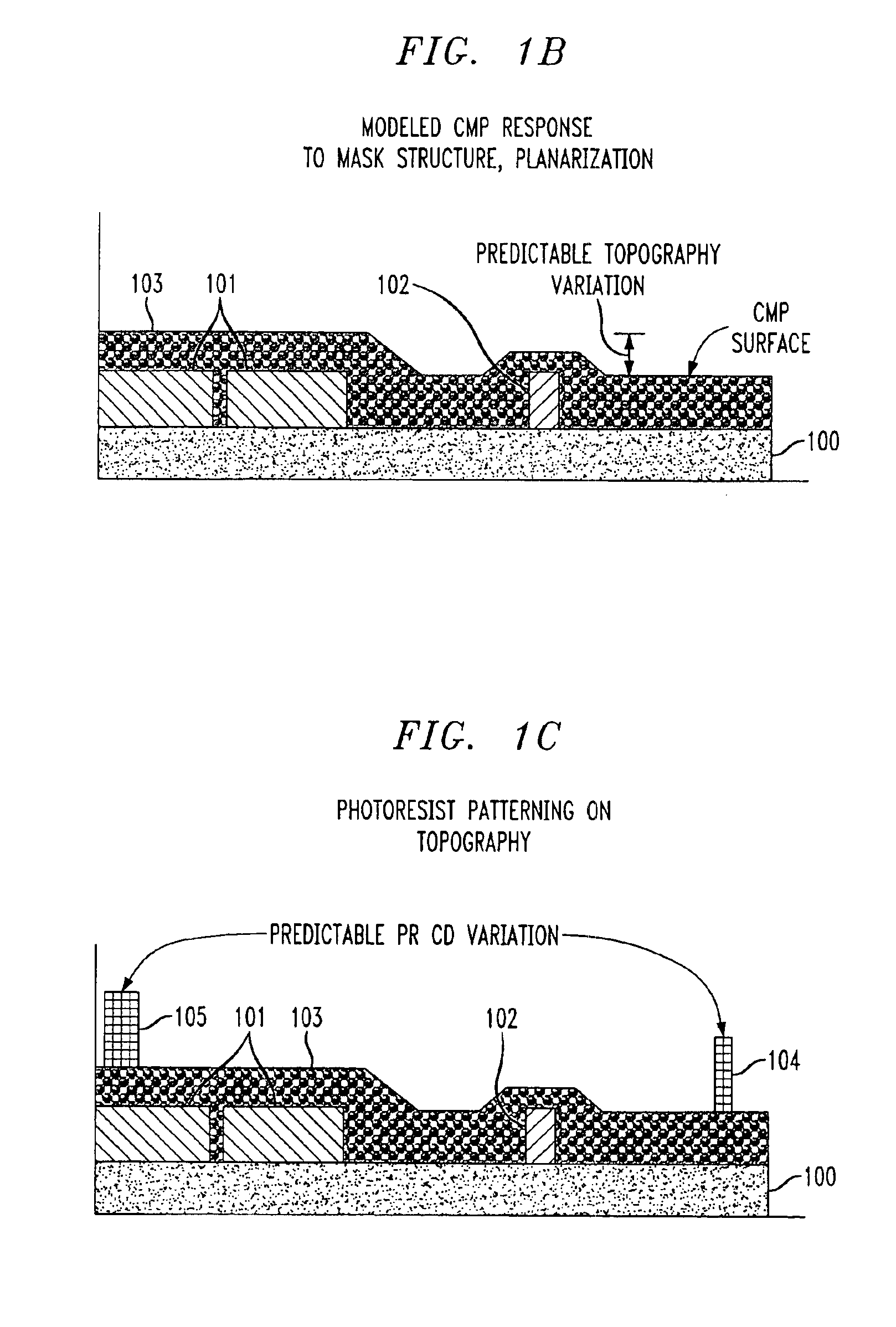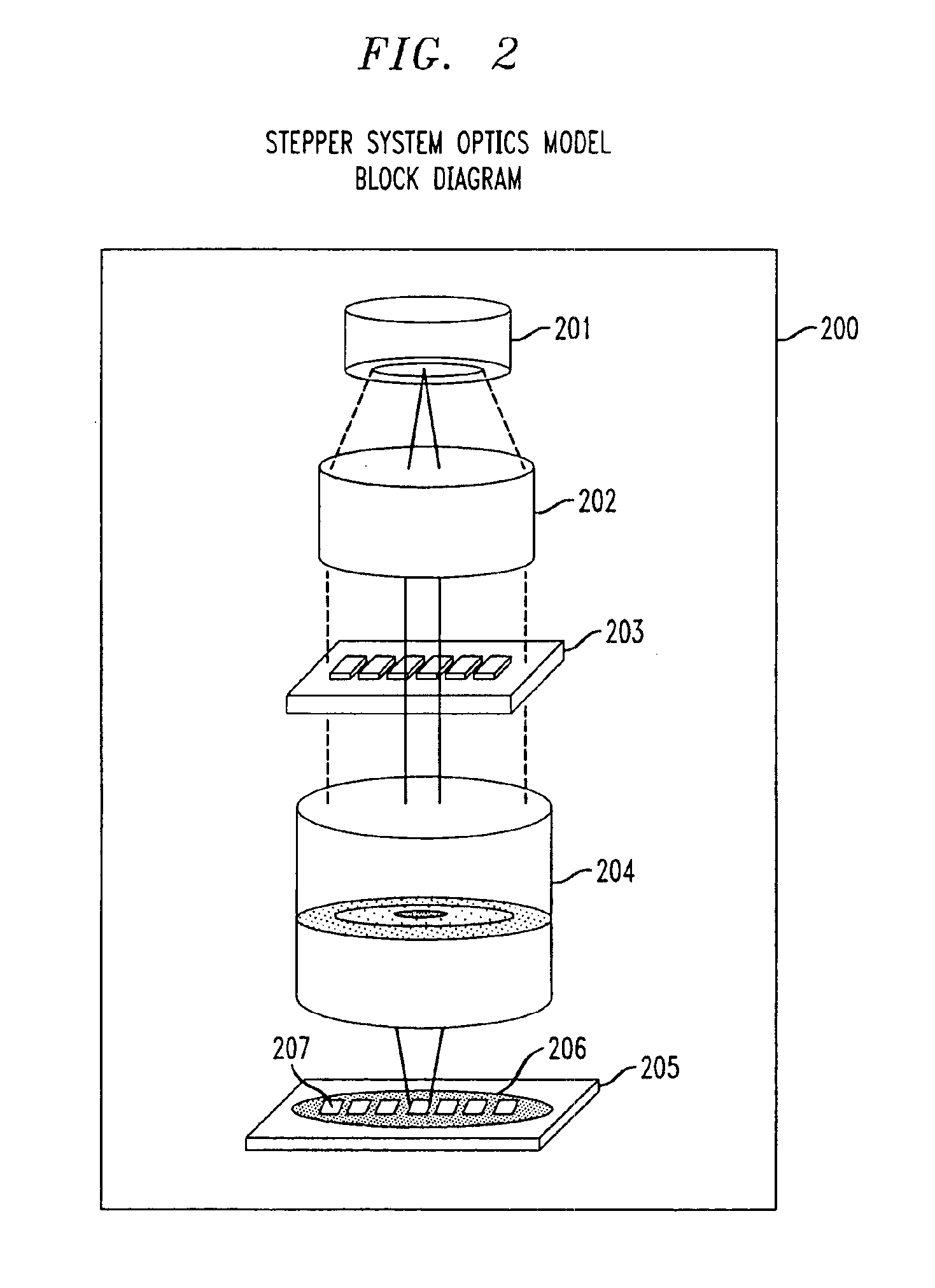Substrate topography compensation at mask design: 3D OPC topography anchored
a topography compensation and mask technology, applied in the field of semiconductor device manufacturing, can solve the problems of affecting the performance of the semiconductor device, the software is not effective for wafer topography correction or other process-induced critical dimension variation, and the quality of the semiconductor device is affected, so as to improve process precision, increase product yield rate, and improve the effect of quality
- Summary
- Abstract
- Description
- Claims
- Application Information
AI Technical Summary
Benefits of technology
Problems solved by technology
Method used
Image
Examples
Embodiment Construction
[0017]Semiconductor manufacturing includes a number of crucial processes performed on wafer lots, one of which is photolithography. As semiconductive materials are staged through these processes, it is essential to accurately perform photolithography since it determines device dimensions directly effecting quality, production yield, and manufacturing cost. Photolithography is also a critical process because it is iterated in a succession of exposure / processing steps to form a number of superimposed layers of insulators, conductors, and semiconductor materials.
[0018]Photolithographic processing occurs on a plurality or “lot” of wafers, which are fabricated as a batch. A representative photolithographic processing includes the following steps:[0019]Each wafer has material patterned on its surface using a photoresist patterning process (i.e., each wafer is coated with photoresist),[0020]Wafers are exposed to an energy source such as an ultraviolet light with a mask exposed onto the pho...
PUM
 Login to View More
Login to View More Abstract
Description
Claims
Application Information
 Login to View More
Login to View More - R&D
- Intellectual Property
- Life Sciences
- Materials
- Tech Scout
- Unparalleled Data Quality
- Higher Quality Content
- 60% Fewer Hallucinations
Browse by: Latest US Patents, China's latest patents, Technical Efficacy Thesaurus, Application Domain, Technology Topic, Popular Technical Reports.
© 2025 PatSnap. All rights reserved.Legal|Privacy policy|Modern Slavery Act Transparency Statement|Sitemap|About US| Contact US: help@patsnap.com



